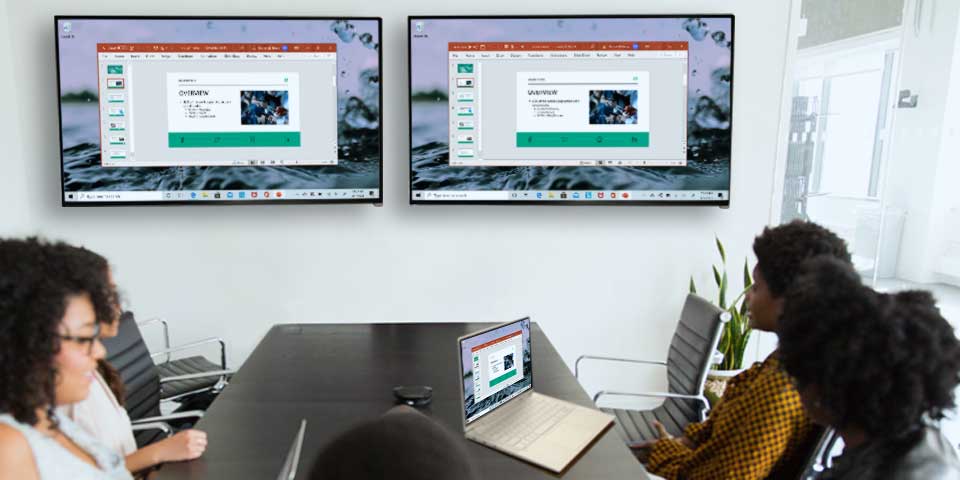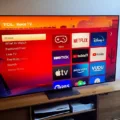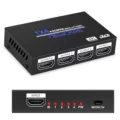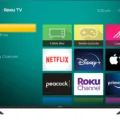Laptops have become an essential part of our lives, and we use them for various purposes, including work, entertainment, and education. In recent years, the ability to cast our laptop screens to multiple TVs has become increasingly popular. This feature allows us to share our laptop’s content with friends, family, and colleagues on a larger screen. In this article, we will explore how to cast a laptop on multiple TVs.
To begin with, you will need a laptop with a video output port. Most laptops come with an HDMI port, which is the most common video output port. If your laptop does not have an HDMI port, you can use an adapter to convert your laptop’s video output to HDMI. Once you have the necessary hardware, you can proceed to cast your laptop screen onto multiple TVs.
The first step is to connect one of the TVs to your laptop using an HDMI cable. Once the connection is established, you can proceed to cast your laptop screen to the TV using the built-in casting feature of your laptop. To do this, follow these simple steps:
1. Click on the Start menu and go to Settings.
2. Select Devices.
3. Click on Connected Devices.
4. Click on Add a Device.
5. Select your TV from the list of available devices.
6. Follow the on-screen instructions to complete the set-up process.
Once you have successfully cast your laptop screen to the first TV, you can proceed to cast to the second TV. To cast multiple TVs simultaneously, you will need a splitter. A splitter is a device that allows you to split the HDMI signal from your laptop to multiple TVs. You can connect the splitter to your laptop’s HDMI port and then connect the HDMI cables from the splitter to each TV.
Once you have connected the splitter, you can proceed to cast your laptop screen to multiple TVs. To do this, follow the steps outlined above to cast your laptop screen to the first TV. Once the first TV is connected, you can proceed to cast to the second TV by selecting it from the list of available devices.
It is important to note that the quality of the video and audio may be affected when casting to multiple TVs simultaneously. This is because the signal is being split, and the quality may decrease as a result. To avoid this, you can use a high-quality splitter that supports 4K resolution and has a built-in amplifier to boost the signal.
Casting your laptop screen to multiple TVs is a great way to share your content with a larger audience. With the right hardware and the built-in casting feature of your laptop, you can easily cast your screen on multiple TVs. Just remember to use a high-quality splitter to ensure that the quality of the video and audio is not compromised.

Connecting a Laptop to Multiple TVs
Connecting your laptop to multiple TVs can be achieved by following these steps:
1. Identify the video output ports on your laptop: Before you can connect your laptop to multiple TVs, you need to identify the video output ports on your laptop. Typically, laptops come with one or more of the following video output ports: HDMI, DisplayPort, VGA, or DVI.
2. Check the video input ports on your TVs: Next, you need to check the video input ports on your TVs. Most modern TVs come with HDMI input ports, but older models may have VGA, DVI, or composite video input ports. Make sure you have the correct cables to connect your laptop to each TV.
3. Connect your laptop to the first TV: Once you have identified the video output port on your laptop and the input port on your first TV, you can connect them using the appropriate cable. For example, if both your laptop and TV have HDMI ports, you can use an HDMI cable to connect them.
4. Configure your laptop’s display settings: After connecting your laptop to the first TV, you need to configure your display settings to extend your desktop across both screens. On Windows, you can do this by right-clicking on the desktop, selecting “Display settings,” and then selecting “Extend desktop” from the Multiple Displays dropdown menu.
5. Connect your laptop to the second TV: Once you have extended your desktop across both screens, you can connect your laptop to the second TV using the same process as before.
6. Configure your display settings for the second TV: you need to configure your display settings for the second TV by right-clicking on the desktop, selecting “Display settings,” and then selecting “Extend desktop” from the Multiple displays dropdown menu again.
In summary, to connect your laptop to multiple TVs, you need to identify the video output ports on your laptop, check the video input ports on your TVs, connect your laptop to each TV using the appropriate cables, configure your display settings to extend your desktop across both screens and repeat the process for each additional TV.
Screen Casting to Multiple TVs
It is possible to screencast to multiple TVs. To do this, you can use an HDMI splitter, which will allow you to split the signal from your device to multiple TVs. An HDMI splitter is a device that has one HDMI input and multiple HDMI outputs. You can connect your device to the HDMI input of the splitter and then connect the HDMI output of the splitter to multiple TVs. This will allow you to mirror the content on your device to all the connected TVs simultaneously.
It is important to note that not all HDMI splitters are created equal. Some may have limitations on the number of TVs they can support or may not work with certain devices. Therefore, it is important to choose a high-quality HDMI splitter that is compatible with your device and can support the number of TVs you want to connect.
Alternatively, if you have a Chromecast device, you can cast to multiple TVs by connecting multiple Chromecast devices to each TV and then casting to all the devices simultaneously. This can be done using the Google Home app, which allows you to create groups of Chromecast devices and cast them all at once.
Screen casting to multiple TVs is possible using an HDMI splitter or multiple Chromecast devices. It is important to choose a high-quality splitter or ensure that all the devices are compatible and set up correctly to ensure a smooth and seamless experience.






